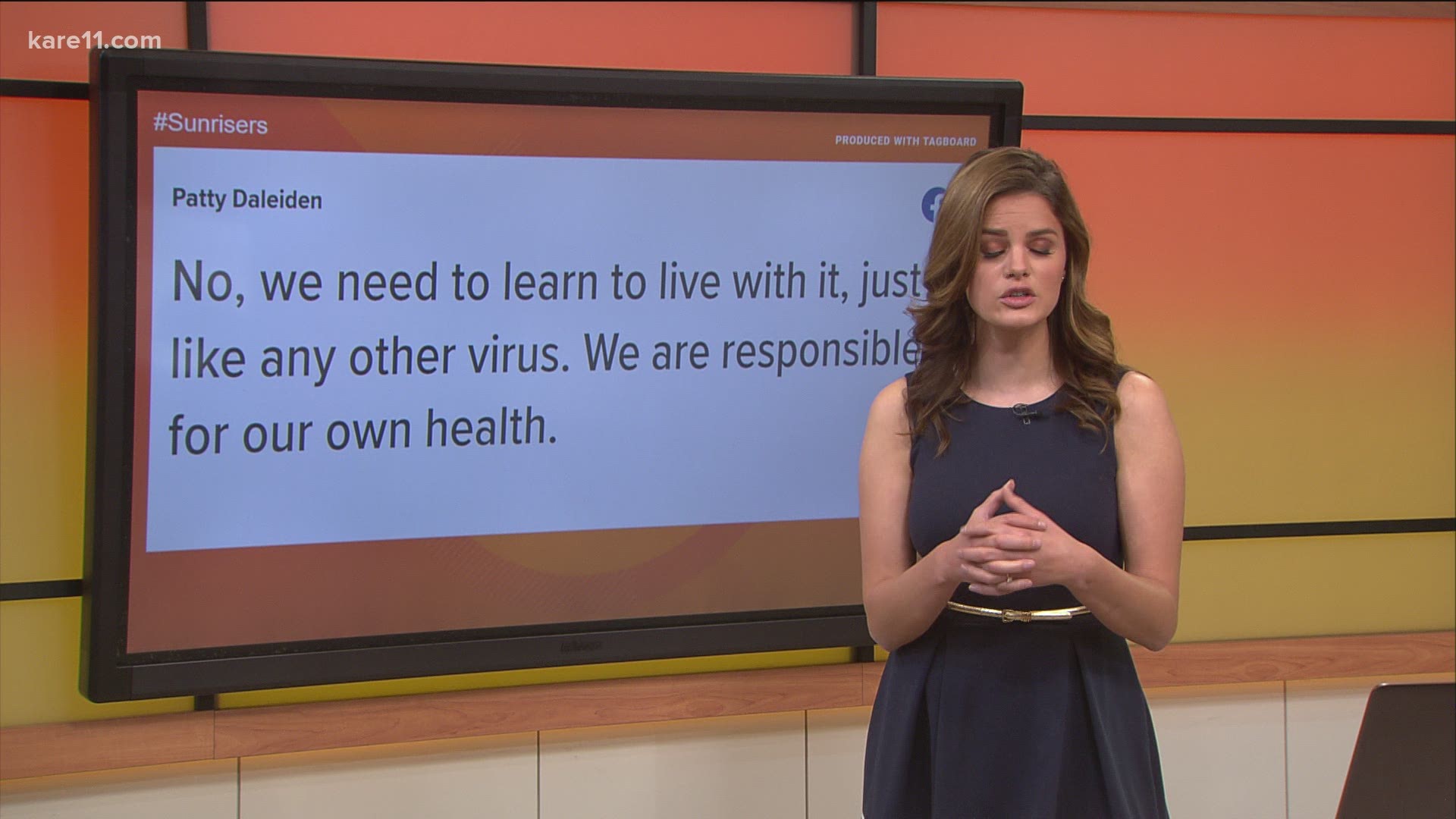Minnesota's neighbors to the east have put renewed restrictions in place in response to a spike in COVID-19 cases.
Wisconsin Gov. Tony Evers announced a new order Tuesday limiting indoor gatherings. The order reduces the legal occupancy of a building to 25%, and gatherings in indoor spaces without an occupancy limit to 10 people.
Minnesota's case growth is not as striking as Wisconsin's, but health officials have repeatedly warned that "dialing back" could be necessary if rates continue to climb.
What would dialing back look like? Minnesota state health officials already have a road map available.
A look back
From March to October, the state moved gradually from a near-complete lockdown to where things stand now. The timeline looked like this:
- Stay Home MN: March 26-May 17
- All Minnesotans were asked to stay home except for essential activities. Many businesses deemed "non-critical" were closed, and restaurants offered takeout and delivery only. Schools and places of worship were closed, and funerals and weddings were limited to 10 people or less.
- Phase 1: May 18-June 1
- Social gatherings of 10 or less were permitted. Retail businesses were allowed to operate at 50% capacity. Partway through, on May 27, places of worship were allowed to begin operating at 25% capacity.
- Phase 2: June 2-9
- Outdoor dining was allowed at restaurants, not to exceed 50 customers. Salons and barbershops opened at 25% capacity. Schools opened with a hybrid model for summer learning. Pools and campgrounds opened with restrictions. Social gatherings were still limited to 10 people or fewer.
- Phase 3: June 10-present
- Social gatherings are still limited to 25 or less outdoors and 10 or less indoors. Retail stores, salons and places of worship are open at 50% capacity, restaurants and bars can offer indoor seating at 50% capacity, and gyms and entertainment facilities are open at 25% capacity. Schools are offering different learning models (hybrid, distance or in-person) at the discretion of the district. Of course, these guidelines are all in addition to the statewide mask mandate implemented July 25.
What could be next?
Minnesota has been in Phase 3 all summer, and is still technically there. According to the governor's office, the state is unlikely to "jump" between phases in a clean way. So moving immediately back to Phase 2 will likely not be the next announcement Minnesotans will hear.
What is more probable is that the governor would use what his office calls "surgical precision" to identify and limit higher-risk activities and settings, somewhat like other states have done. That could include establishments like bars, and gatherings like weddings and funerals.
As far as Phase 2 goes, a spokesperson said, “We could get back there but it probably wouldn’t be in one fell swoop.”
Generally the phases detailed online, according to the governor's office, still offer an accurate scale of the big picture. Phase 4, if and when Minnesota arrives there, would carry the "potential for increased capacity" in all categories, but the state has not said specifically what that would look like.
On a briefing call he joined with state health officials Tuesday, Gov. Tim Walz said that Minnesota would likely not move directly back to a different “phase” if any dial-back measures were to be put in place.
“One of the things we’ve learned over the seven months is to be more granular, to use the scalpel when we can,” he said.
Walz said his office is looking “industry to industry.”
“I think it would be dependent upon where the spread is coming from,” he said.
More details on Phase 3 in Minnesota are available below or online here.
Phase 2, if Minnesota should go back to it or at least reinstate parts of it, is laid out below or online here.
The state has a "Dial Back Dashboard" posted online, showing Minnesota's progress in five key areas that are used to determine whether new restrictions are called for.
The state is past the "caution" threshold in three of five areas: Percentage of cases with no known exposure source, hospital admissions per 100,000, and daily new cases per 100,000. The other two indicators, testing rates and percentage of tests that come back positive, are outside of the "caution" zone.
'Still in that long, dark winter'
Gov. Tim Walz held a roundtable Wednesday with COVID-19 survivors. He did not directly address the possibility of dialing back, but he did acknowledge that people are weary of restrictions.
"The question I get asked a lot is, 'Governor, when are you gonna take the mask mandate off, when are you gonna open up bars?'" Walz said. "And my response seems to fall somewhat flat which is, 'The virus dictates when we’re going to do this, and our response to the virus is going to dictate how quickly that gets done."
Walz said that six months into the pandemic, "we've learned a lot."
"I think that we have used data, we have learned, we’ve innovated, we’ve grown, we’ve corrected things when we think we’ve gone down the wrong path," he said.
Still, the governor hearkened back to his words six months ago.
"I said in March it was gonna be a long, dark winter," he said. "We’re still in that long, dark winter."

